Generally called ladies’ finger or gumbo, Okra is a vegetable prominently used in the sub-continental region. Okra is rich in antioxidants, minerals, and other vitamins, along with adequate fiber content. Okra is rich in nutrients while having fewer calories, along with the presence of vitamins C and K that boost the immune system and help mitigate blood clot issues. Let’s check out the best practices to grow Okra at home.
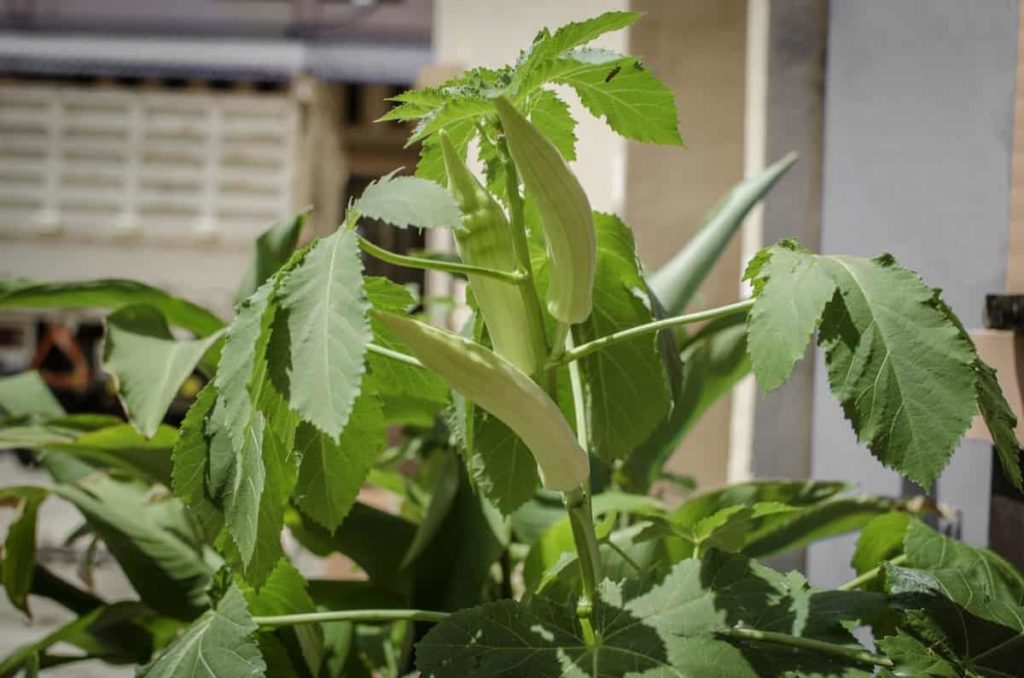
Its special sticky nature is the reason for its presence in many sauce-like foods, while it is also consumed as a fried vegetable dish. It is rumouredly believed to be effective in improving intellectual abilities. People’s interest in home farming has been growing rapidly since the pandemic, and as a part of that, Okra is also favored to be grown at home farms or backyards. Below are some common queries regarding Okra and best practices for growing it at home.
Best Practices to Grow Okra at Home
How long does it take Okra to grow?
Okra starts growing as big flowers initially. The flowering stage can be observed after two months. These flowers slowly dry up and give rise to Okra pods that grow slowly for 3-5 days. Being a warm-season variety, Okra mostly tends to grow fast like the other crops of those growing conditions. Though it is generally two months before one can see Okra pods growing, the duration can sometimes go beyond months, depending on prevailing climatic conditions.
Can we grow Okra from fresh seeds?
Generally, Okra has grown from fresh seeds, though it requires a little preparation before sowing the seeds. The fresh seeds have a coating over their surface called ‘seed coat,’ which may hinder the sprouting of the seed. To avoid this, the Okra seeds are placed in a refrigerator and allowed to be there overnight. These seeds can now be used to grow Okra.
In case you missed it: Growing Okra In Pots / Containers / Backyard
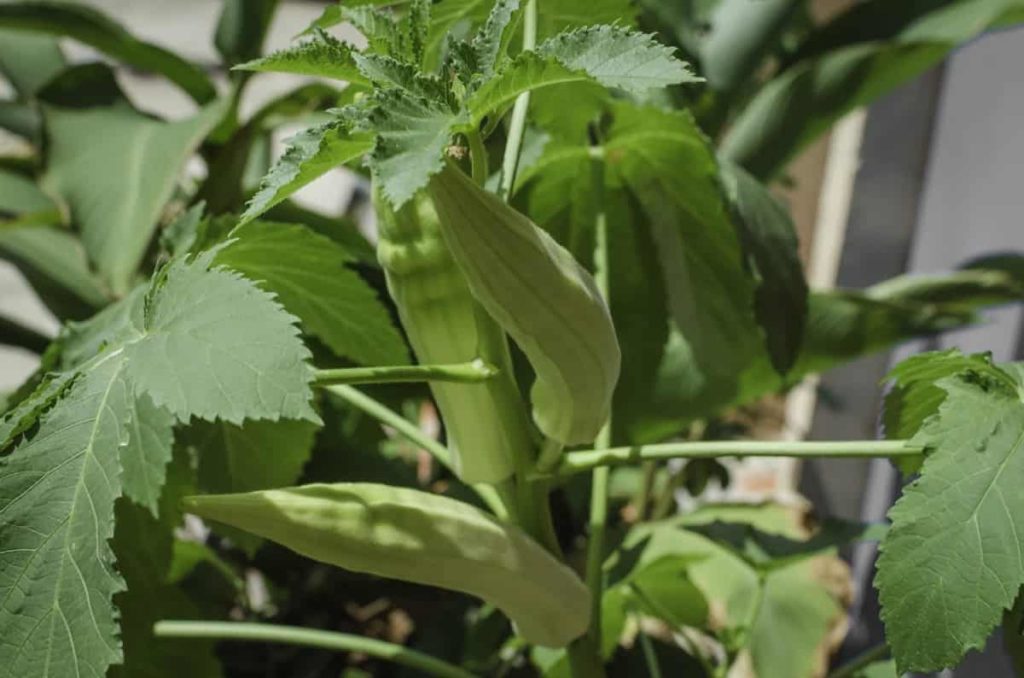
How do I get Okra seeds?
Okra seeds are obtained from the pods. These pods are placed in dry conditions such that they dry up from the tip and start to open up along their length. In such conditions, the dried-up pods can be twisted and opened up to obtain the Okra seeds, and since these are already dried, the obtained seeds do not have any sticky substance on them and can be readily used.
Does Okra require a lot of water?
Okras are favorably grown in dry conditions, and they are warm-season vegetables. However, they are best grown in dry and summer-like conditions. This is one of the reasons they are available throughout the year. Even then, efforts are to be made to water the plant enough, like an inch in height from the soil level. This ensures proper nurturing of the plant and can help maintain soil productivity for longer durations and further production.
How do you grow Okra faster?
Okra usually takes around 2-3 months to grow and start podding. Only then can we start harvesting the pods. But steps can also be followed to quicken the germination process so that the Okra can be harvested sooner, like soaking the seeds in warm water before sowing them in the soil. This stimulates the germination process even before the actual plantation process starts and thus helps in quicker growth resulting in an early harvest.
Can Okra be grown in pots?
Okra can also be grown in pots and containers like any other general vegetable plant. For best results, containers at least 25-30 cm wide are preferred for the plants. When they grow and are ready to harvest might become heavy at the top, and one may lose it if the bottom is not wide enough to contain the plant in case of bending. And most importantly, it is to be ensured that the pot has at least one water draining passage or hole at the bottom to avoid undesired water accumulation and overdose of water to the seed.
In case you missed it: Okra Farming Details (Lady’s Finger) Guide
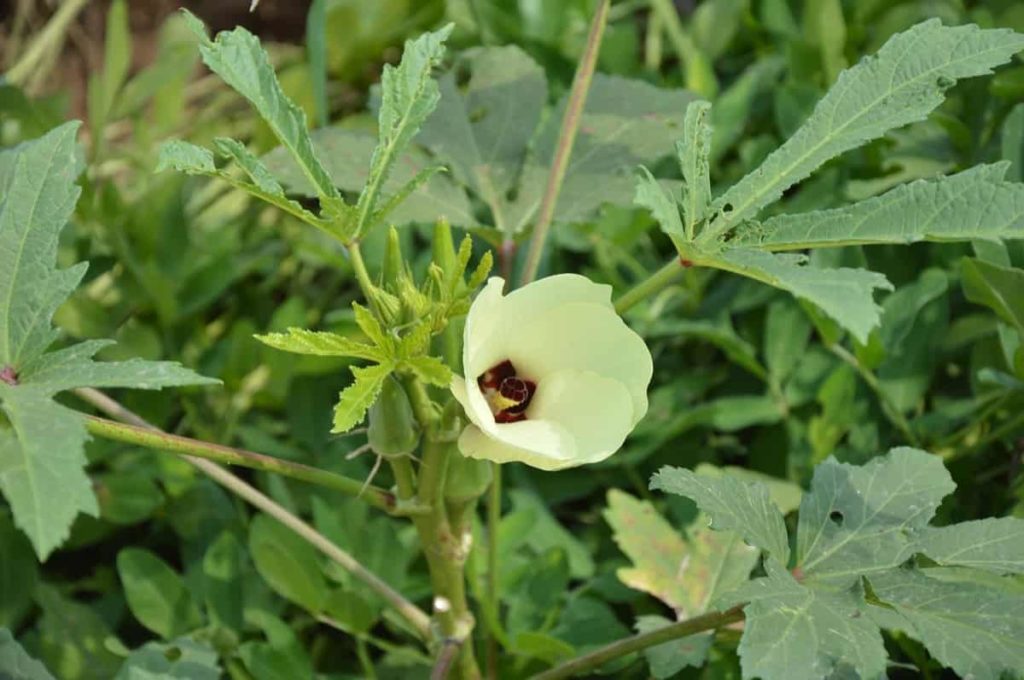
How many Okra will one plant produce?
In ideal cases, an Okra plant well-nourished and well-nurtured can yield more than 30 Okra pods. This count can differ with varying climatic conditions and nurturing provided. For longer durations of dry conditions and warmer zones, the count may drop, and the time taken for the crop to yield also gets extended.
Does Okra need a hot sun?
Okra usually demands warm and dry conditions to thrive, thus requiring the full sun for most of its growing duration. Water is to be supplied regularly in limited amounts to maintain moisture and nourish the seed to grow out of the seed and photosynthesis to take place. During prolonged conditions of dry weather and warmth, an extended time of growth can be expected.
What month do I plant Okra?
Okras are sun-loving and warmth-craving plants; hence, they are best recommended to be planted by the end of the cold season or the death of winters and the early beginning of summer. However, since the yielding time of Okra is two months, the weather conditions are best suitable for harvesting if planting is done at the end of winter or the beginning of summer.
In case you missed it: Growing Tomatoes Tips and Tricks
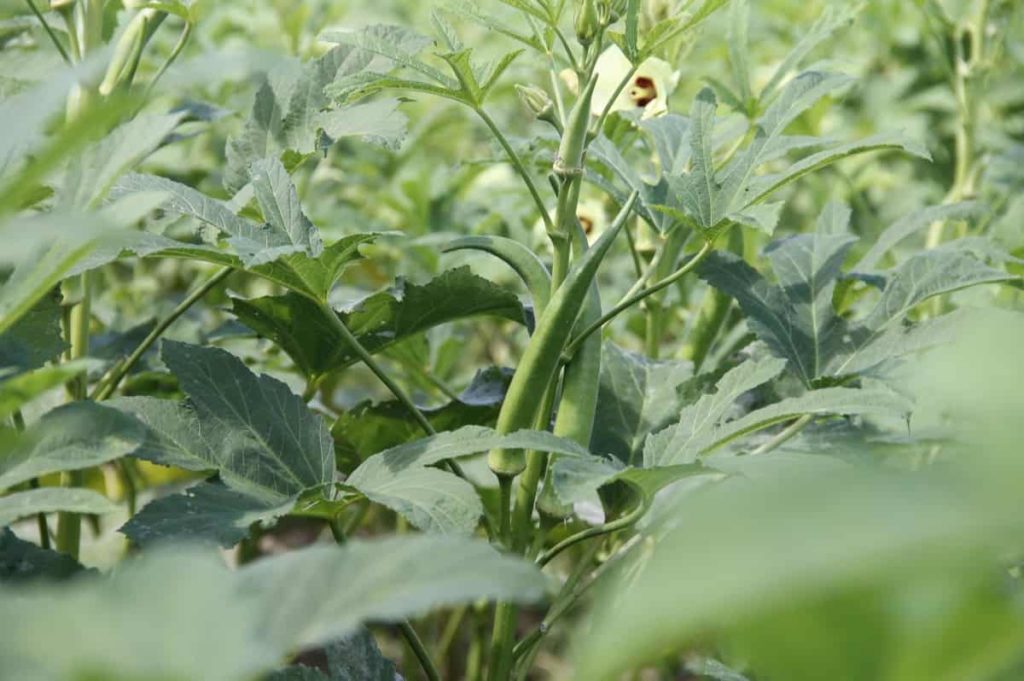
The soil used also plays an important part in the yield obtained at harvest, so the best time to start planting Okra is when the best loam soil is available that won’t retain water more than desired amounts. All factors combinedly are responsible for the productivity at the end of harvest.
What fertilizer is best for Okra?
Okras are chopped or harvested 6-12 inches from the soil level. Following this step, fertilizing the soil with a mixture of nitrogen and potassium in the ratio of 1:2 can help the soil support faster flower growth and contribute to new growth.
What can you not plant near Okra?
Cucumbers cannot be planted near Okra, as the cucumber vines grow to a larger extent and demand great amounts of sunlight and the available warmth of the sun, which hinders the Okra plant’s growth. Pepper plants are also not desirable to grow near the Okra plants because of the tendency of pepper plants to repel worms of cabbage that can be fatal to Okra as they can eat them off even before podding, which is undesirable.
What is the lifespan of the Okra plant?
The average lifespan of an Okra plant is 120 days, approximately four months. Therefore, by maintaining ideal conditions, one can have three products from the Okra plant in one year.
In case you missed it: Growing Potatoes In Containers Information
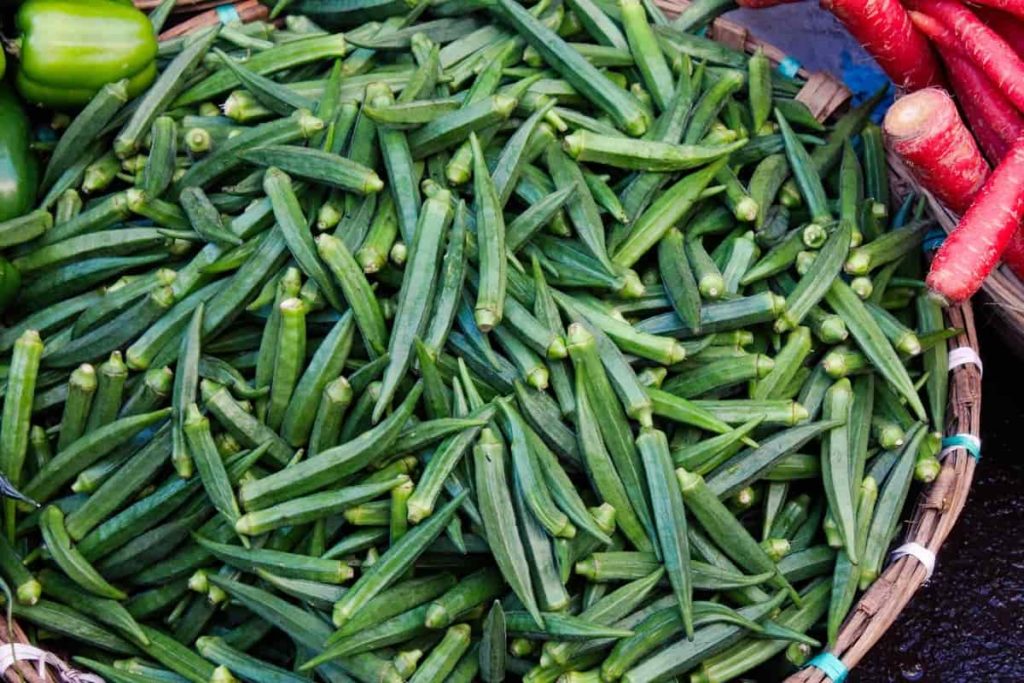
How long do Okra plants get?
A healthy Okra plant can grow as tall as 7 feet with a minimum height of 3 feet, around 2 meters from the soil levels.
How do you grow Okra step by step?
Firstly, fresh seeds are collected from dried-up Okra pods by twisting them open after they dry up, either by forced drying or naturally over time. These are taken and frozen overnight and are filed a bit to remove the seed coat, which is a basic step to initiate the speed growth of sprouts and encourage germination. These seeds are planted into the soil around half an inch deep, separating 7-10 inches from each seed in the row.
If multiple rows are planted, the rows are maintained 3 feet apart. These seedlings and seeds are delicate and need to be handled carefully. The ideal soil is in a rather dry condition and is preferred in either a container or a large pot at least 15 inches wide and tall enough to contain a 2-2.5 meters tall plant of Okra. The soil needs to have an acidic pH value ranging from 4-6, with fewer water-clogging conditions. The container must have a water draining arrangement to avoid water clogging and overdose of water to the seed.
Regular watering is done with full sun warmth and adequately nourishes for two months. Then, the plant starts to bloom flowers of either yellow or white which then drop off and yield pods that grow like 4-5 inches. This is the ideal time to harvest these pods before the head of the plant becomes too heavy or strong to harvest.
In case you missed it: Dairy Farming Subsidy In India – By Government
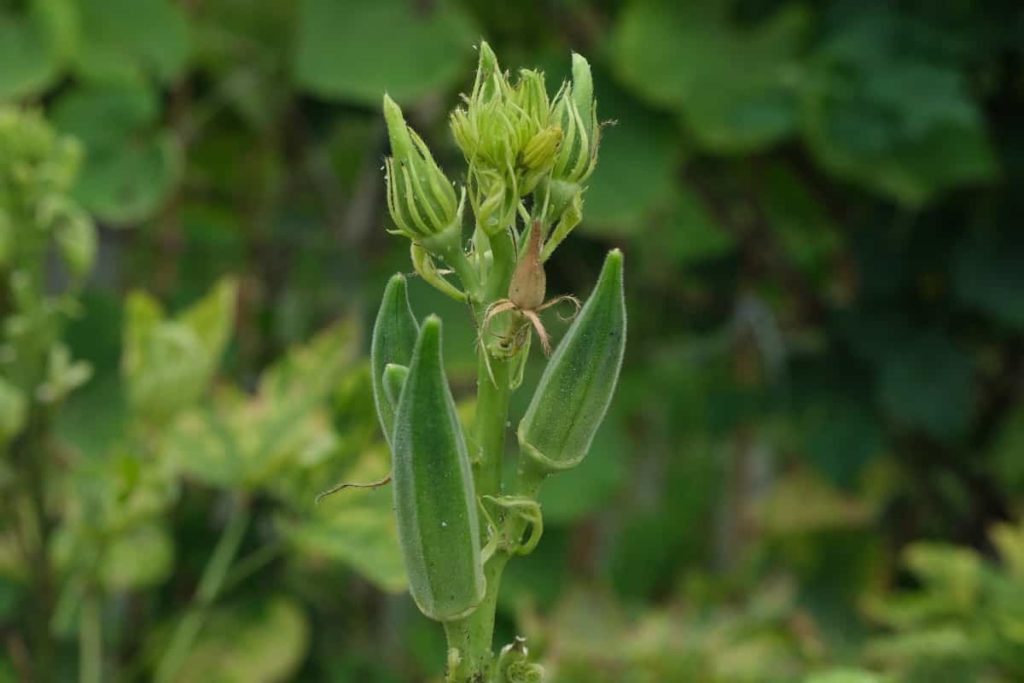
Conclusion
These are some of the commonly asked queries about Okra farming at home. Although the mentioned conditions and practices are ideal and based on previous studies, practical observations may differ due to varying climatic conditions and the production area. Okras are most preferred in the sub-continental region and are always in demand throughout the year, irrespective of the crop seasons. The above practices and suggestions can help one produce and cultivate Okra better and obtain proper yield.
- Budget Friendly Sheep Shed Ideas: Cheap and Low-Cost Tips
- How Much Do Cattle Farmers Make: Revenue Streams in Cattle Farming
- Management Pests and Diseases in Your Cotton Field
- Sheep Farming Business Plan for Beginners
- Aquaponic Farming at Home: A Step-By-Step Guide
- Profitable Village Farming Business Ideas in 2024
- High-Yield Aquaculture: Fast-Growing Fish for Farming
- Effective Fish Pond Construction Techniques for Beginners
- Irrigation and Water Management in Pineapple Farming
- Blossom to Harvest: Mastering Flowering and Pollination in Papaya Farming
- Pig Fattening Essentials: From Selection to Sale for Beginners
- Raising Wagyu Cattle: A Complete Guide for Premium Beef Production
- Soil Types and Their Water Holding Capacity
- Optimizing Irrigation Schedules for Coconut Groves for Enhanced Yield
- Espresso Your Garden: Coffee Grounds for Healthier Acid-Loving Plants
- The Best Soil Mix for Snake Plants: How to Mix Your Own Snake Plant Soil
- Green Thumb Success: Expert Tips for Cultivating Greenhouse Beans All Year Round
- Bloom All Year Round: The Ultimate Guide to Indoor Hyacinth Care
- Eco-Friendly Gardening: How to Make Liquid Fertilizer from Kitchen Waste
- Ultimate Guide to Grow Anise in Pots: Explore Seed Propagation to Harvesting
- Guide to Raising Chester White Pigs: Discover Breed Facts to Growth Management
- Mastering the Elegance: The Ultimate Guide to Weeping Cherry Tree Care, Planting, and Maintenance
- Ultimate Guide to Planting Garlic in Grow Bags: Growing Strategies for Beginners
- How to Fix Spider Plant Leaf-Related Problems: Natural and Organic Remedies
- 10 Reasons Why Your Tulsi Plant is Shedding Leaves: Home Remedies and Solutions
- Optimizing Growth and Yield: The Advantages of Palm Bunch Ash Fertilizer
- Utilizing Neem Oil Extract as a Natural Pesticide for Hydrangea
- From Soil to Harvest: Various Ways in Which Farmers Can Use AI Tools
- Steps to Encourage and Induce Citrus Flowers: A Comprehensive Guide
- How to Fix Snake Plant Leaf-Related Issues: Natural and Organic Remedies
- Transform Your Garden into a Fragrant Oasis with Raat Ki Rani (Night Blooming Jasmine)
- Discover the Ideal Chicken Breeds for Philippine Farms
- How to Create a Poultry Egg Farm Business Plan for Profits
- Grow Lemon Cucumbers Like a Pro: Insider Techniques for Bountiful Yields
- Ultimate Guide to Caring for Your Pink Princess Philodendron: Tips for Thriving Variegation
- Areca Nut Profit Per Acre: Calculating Yield and Cost of Cultivation
